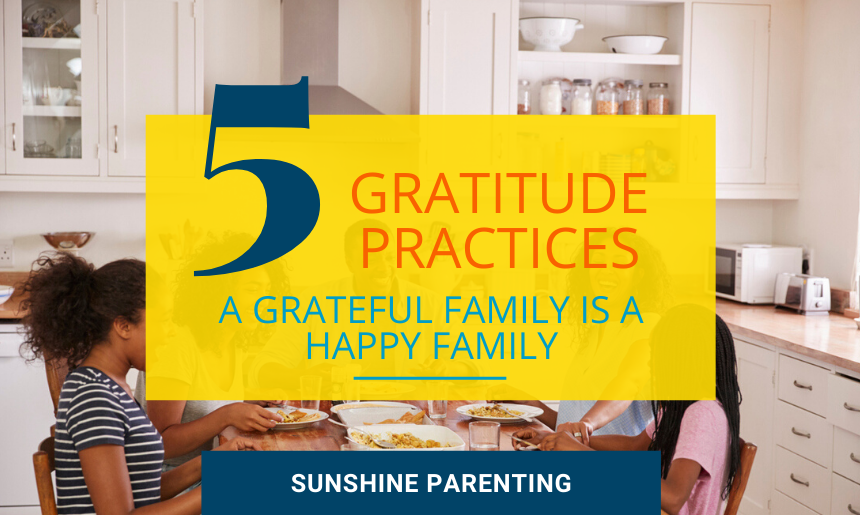 Creating a grateful family culture is a challenge in our entitled, indulgent age. Yet research has confirmed what we intuitively know – Practicing gratitude and being grateful are keys to a happier life.
Creating a grateful family culture is a challenge in our entitled, indulgent age. Yet research has confirmed what we intuitively know – Practicing gratitude and being grateful are keys to a happier life.
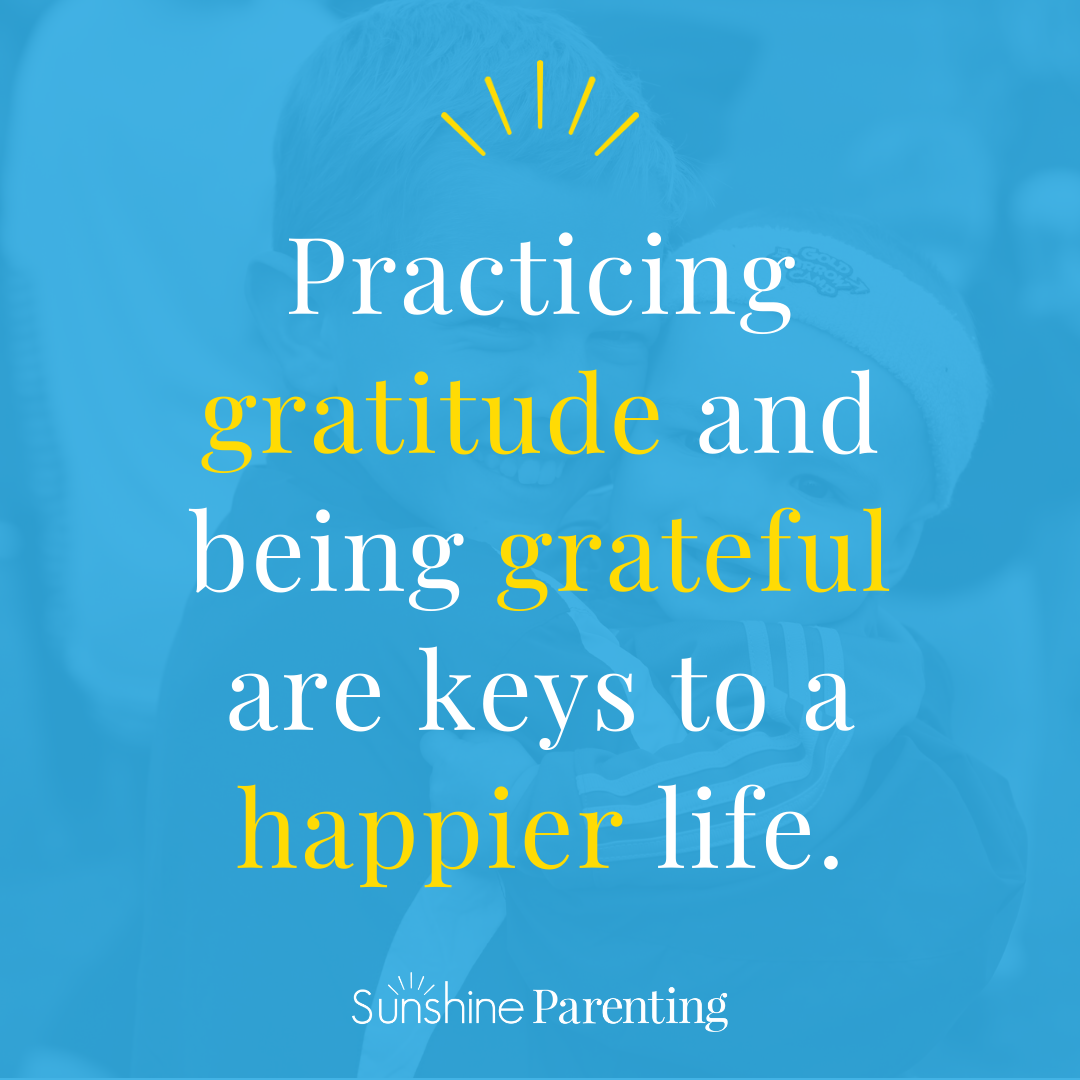
It’s well worth our consistent and continued effort as parents to model and teach our kids to practice gratitude. Although I’ve researched and written about gratitude extensively, my family still has a long way to go to live as truly grateful people.
As we enter this Thanksgiving month, I am doubling down my efforts to promote gratitude. If we – and our kids – constantly dwell on what’s going wrong in our lives and in the world, we are left feeling anxious, empty, and depressed. But when we take time to count our blessings, we shift our mindsets and become happier, more grateful people. We start seeing more of the good in our lives when we’re looking for it.
For those of you who, like me, want to create a more grateful family, here are five family gratitude practices you might try. If your family is like mine, they will most likely only agree to participate in one or two of these activities, so choose one that resonates for you and go for it! (Just tell them it’s required before they get to eat their turkey!)
#1 Daily Gratitude Sharing
Having a daily family sharing practice is a great tool for building connection. Sharing one (or more) things we’re grateful for not only makes for a positive conversation but also helps us each – individually – grow our gratitude muscle. Sharing about what we’re grateful for can be at dinner, on the car ride to school, at bedtime, or whatever time works best with your family’s schedule. Just make it a daily habit and everyone will get used to it.
When we’ve tried this, it seems to eventually warrant some kind of guidelines about what types of things are “shareable.” For example, being thankful for a particular video game might be appropriate to share once, but it’s best to encourage sharing about people and events (in addition to material things) we are grateful for. Perhaps, if you normally share “Highs and Lows,” you can switch to sharing “3 Good Things” just for the month of November?
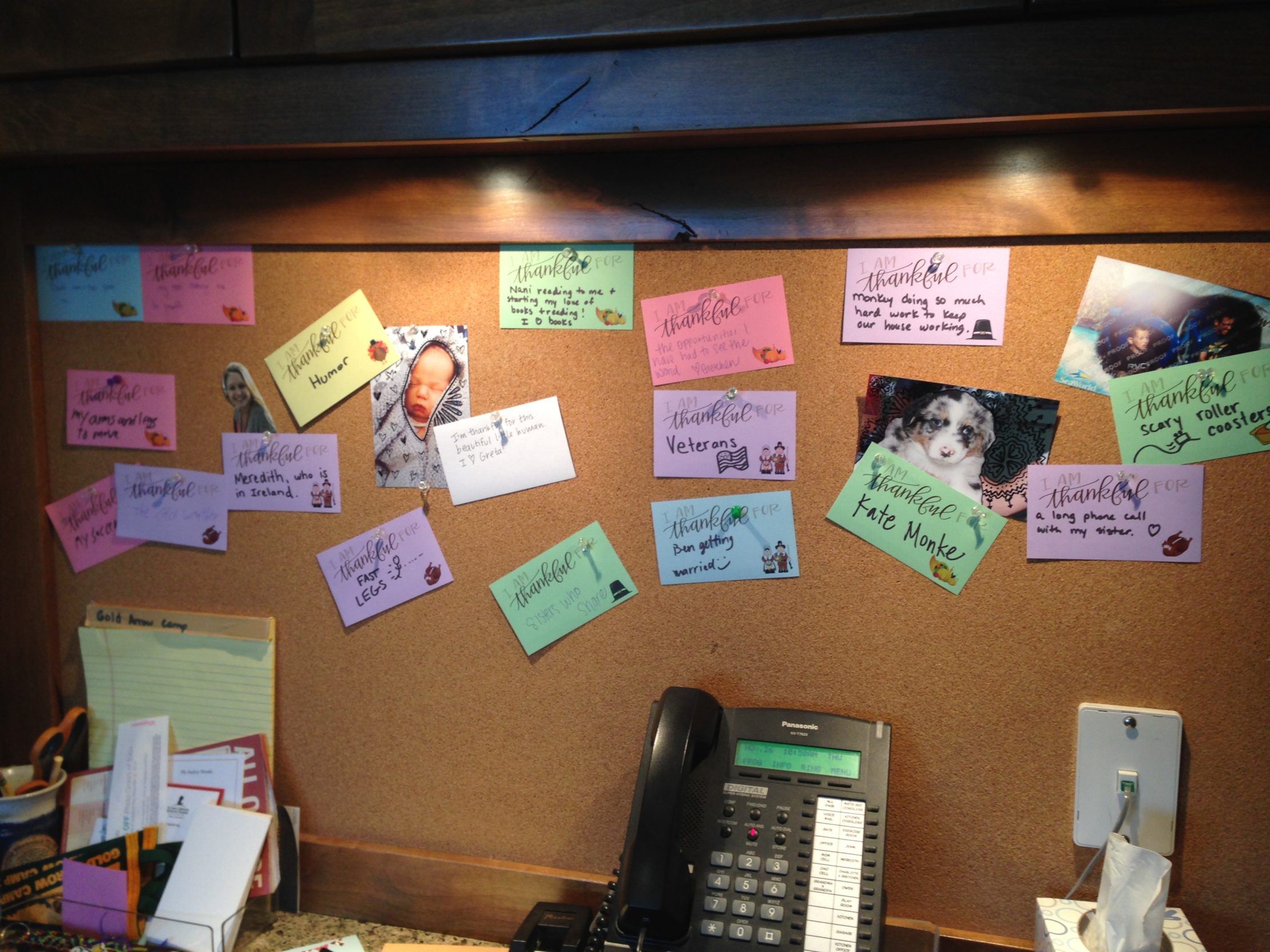 #2 Gratitude Jar or Board
#2 Gratitude Jar or Board
This can be an ongoing family gratitude tradition, possibly kicked off at Thanksgiving and ending on New Year’s Eve. For the jar, people jot down things they are grateful for and put the notes inside. On a specified day (end of the year is good but any time works!), empty the jar and read the notes so the whole family can reflect on individual and group blessings.
A bulletin board is a more visual way to show thanks. Simply tack the notes up as you think of things you’re thankful for. For my family, whether doing the jar or the board, having a minimum daily requirement of one note per person helps make it a habit and fill up our jar or board.
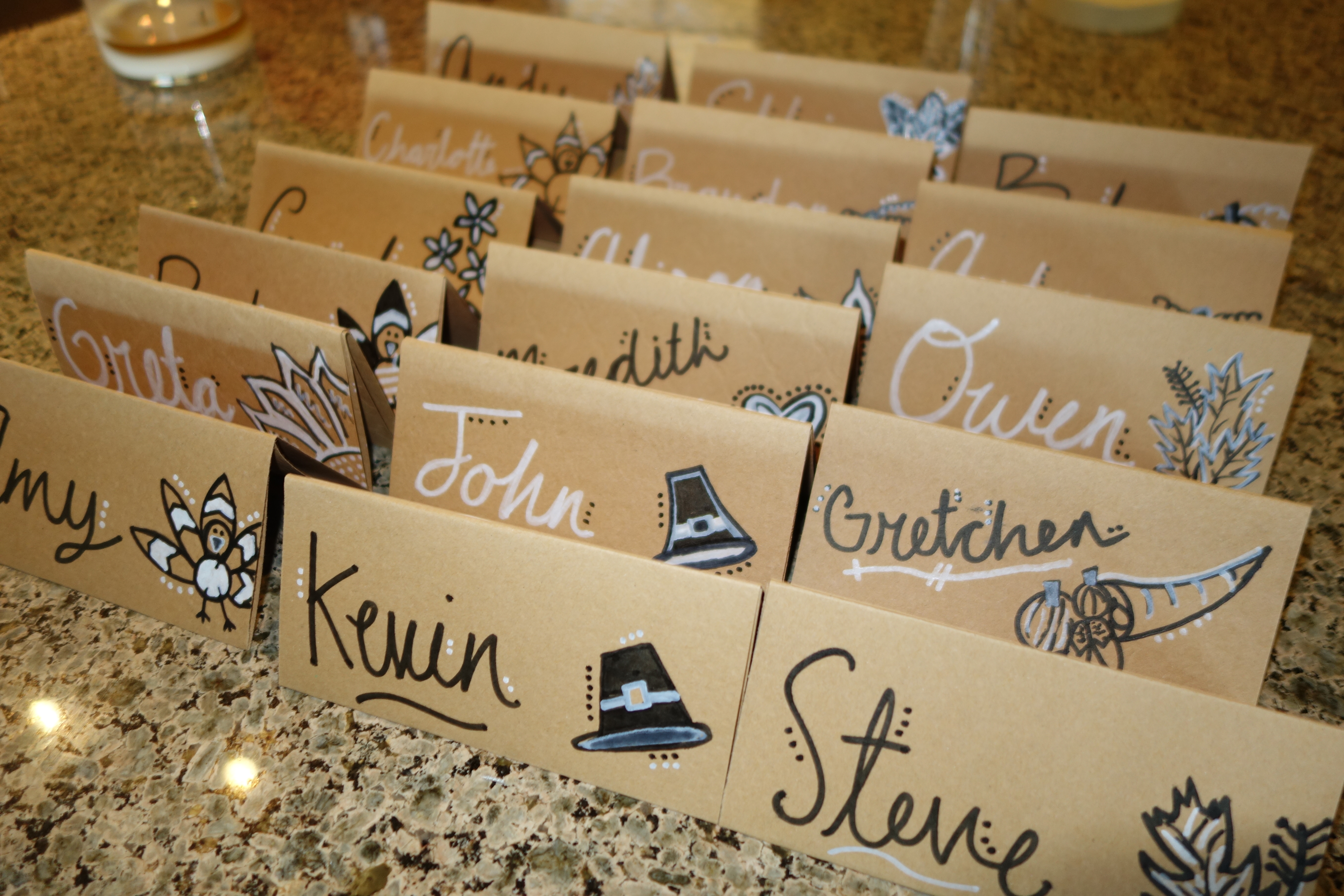 #3 Thankful “Warm Fuzzies” at Thanksgiving
#3 Thankful “Warm Fuzzies” at Thanksgiving
This is one of my favorite activities and something we’ve done for many years. Each family member and visiting friend has an oversized place card at their dining spot. Throughout the afternoon and evening, people write something they appreciate or are grateful for about each person. (We sometimes call these “WOW“s.)
You can write just a few words or a whole sentence, but each person needs to write on everyone else’s card. These are really fun keepsakes that provide a nice boost to each family member. Another way to do this that ensures it happens is by passing the cards around until each person has signed each other person’s card. It’s helpful if one person keeps time and gives everyone 1 minute for each note. When your own card gets back to you, you’ve completed your warm fuzzies!
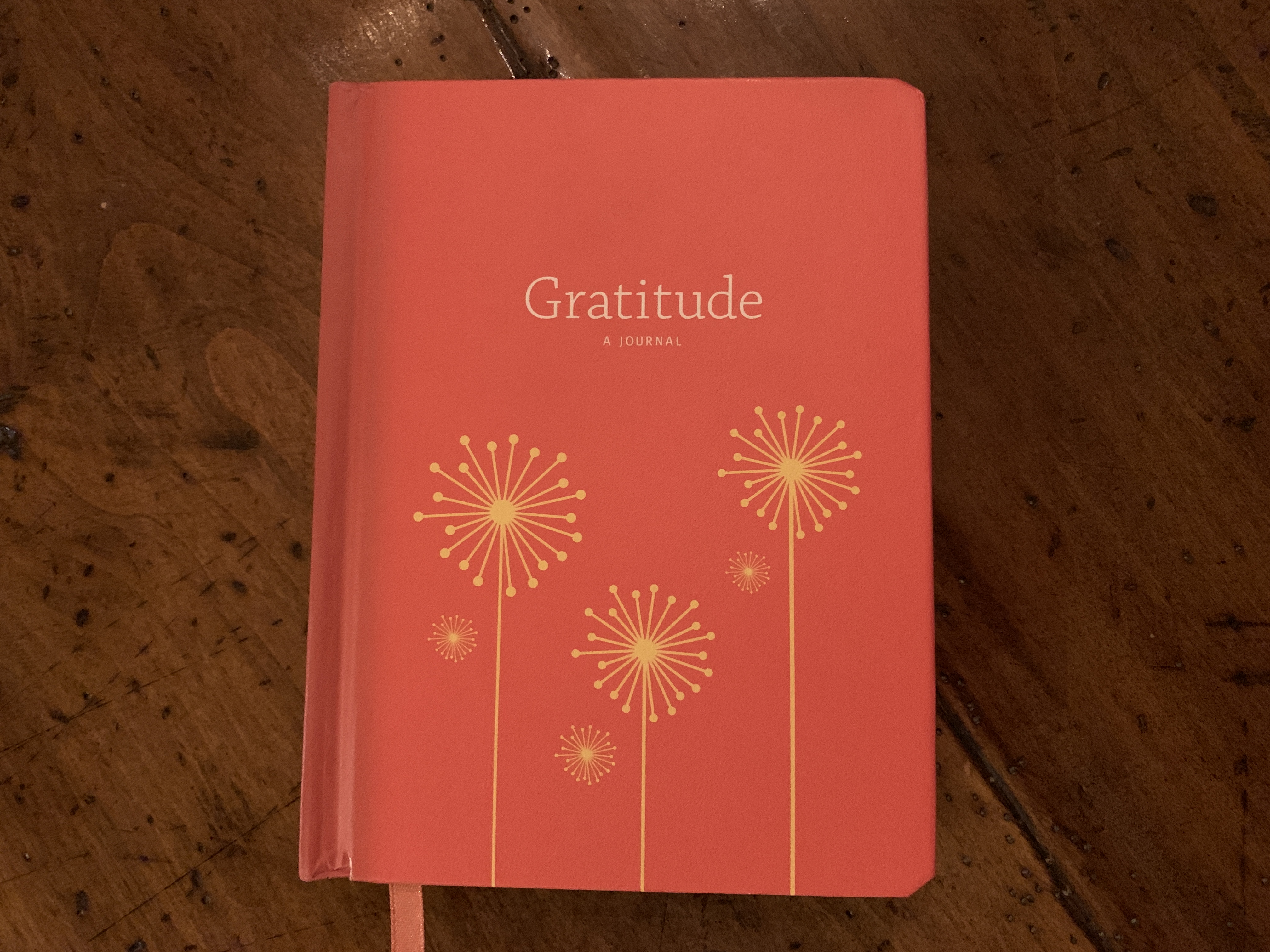 #4 Gratitude Journal
#4 Gratitude Journal
Making gratitude journals was a craft activity we did as a family many years ago. We had a lot of fun creating the journals, but we didn’t all keep up with writing in them regularly. I chalk that family activity up as a failure, but at least we used $1 composition books instead of fancy journals!
Although I and a few of my kids really enjoy journaling, the rest of my family does not. And gratitude journaling is not something that has any benefit if the person writing is feeling resentful.
Sharing aloud, at dinner or bedtime (see #1), is ideal for young kids and those who don’t enjoy writing. Perhaps a written alternative would be a family gratitude journal, completed by a parent or designated scribe, where everyone shares what they’re grateful for, and one person writes things down. This could be an alternative to having a family gratitude jar or gratitude board.
I now practice gratitude as part of my daily journaling by listing three things I’m grateful for before I write anything else. Many planners now have space to list what you’re grateful for. I highly recommend this simple practice that gets you focused on the good stuff to start your day!
This could also be a practice you do with a friend by texting each other your “3 Good Things” each day in November!

Cookies for our friend & neighbor, Ben, on Veteran’s Day.
#5 Giving to Others
Perhaps the best way to promote gratitude in our children and ourselves is giving to or serving others. There are so many opportunities this time of year (and all year long, for that matter) to participate in collection and delivery of food, toys for children, winter coats, and more. There are so many needy people – often right next door to us or in our own families – and reaching out to help others not only makes us more kind and compassionate, but also more appreciative of what we have.
In this episode of the podcast, Natalie Silverstein shares many simple ideas for promoting simple acts of service in our families, including many ideas that can be done at home, don’t take up too much time, or can be made part of our daily or weekly routines.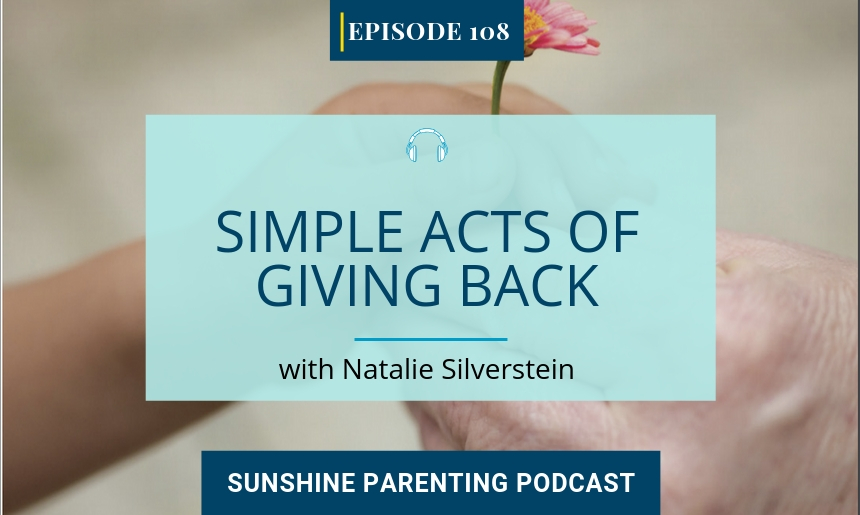
There are so many ways to build up our gratitude muscles, and helping our kids learn to be more grateful people can have a life-long positive impact.
Here’s to promoting an attitude of gratitude in our families during the holidays and all year long!
More Gratitude Resources & Ideas
Listen to Sunshine Parenting Episode 63: Growing Gratitude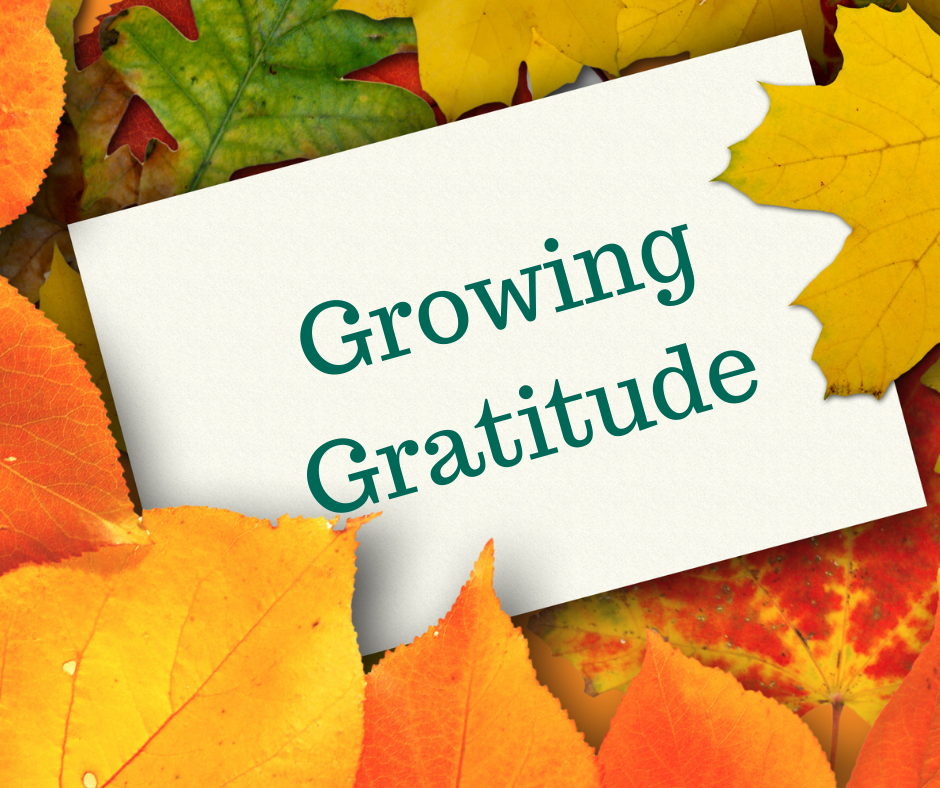
Raising Grateful, Not Entitled, Kids
Ep. 101: Entitlemania with Richard Watts
Ep. 11: The Opposite of Spoiled with Ron Lieber
My Gratitude Board on Pinterest
https://www.health.harvard.edu/healthbeat/giving-thanks-can-make-you-happier
